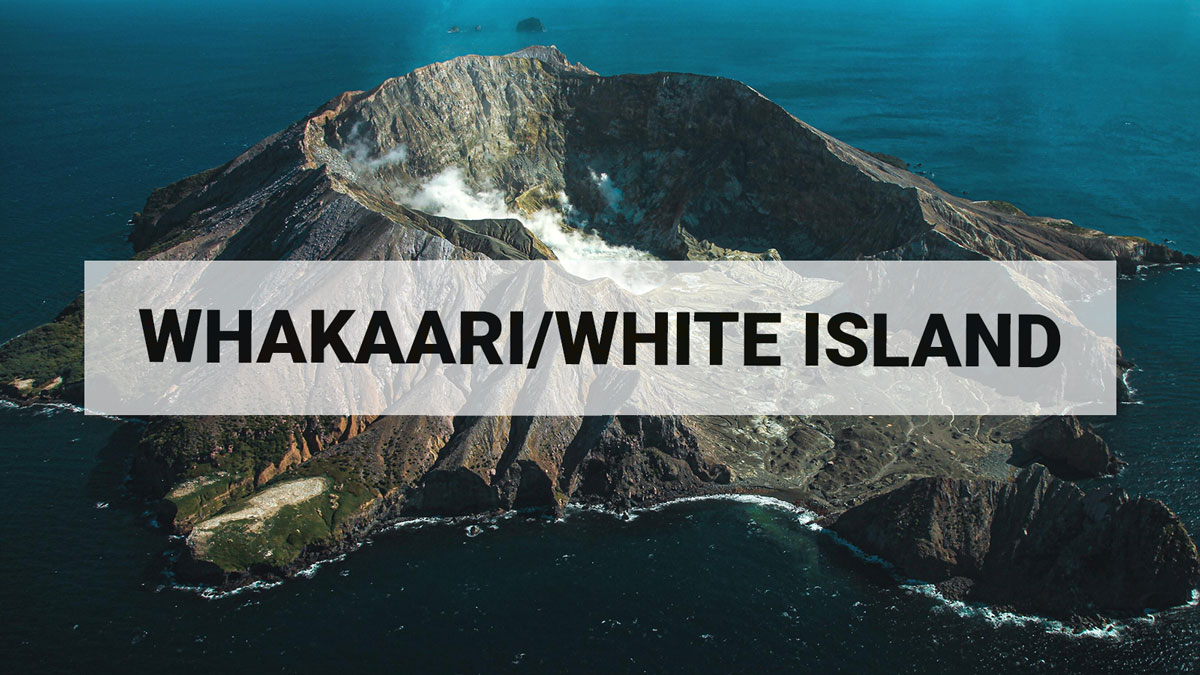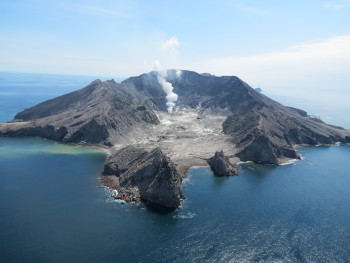
End of eruption at Whakaari/White Island, steam and gas emissions remain variable. Volcanic Alert Level lowered to Level 2 and Aviation Colour Code changed to Yellow.
Based on observations from a monitoring flight on 18 October 2024, recent images from GeoNet’s cameras, and satellite imagery, we can confirm that the recent minor eruptive activity Whakaari/White Island has now stopped, with no further ash emission from the volcano.
Based on observations from a monitoring flight on 18 October 2024, recent images from GeoNet’s cameras, and satellite imagery, we can confirm that the recent minor eruptive activity Whakaari/White Island has now stopped, with no further ash emission from the volcano.
Observations from our flight have shown that the level of activity from the active vent area has decreased (Fig. 1), with no evidence of eruptive activity or ash emissions from the last couple of weeks. Additionally, Metservice has not detected any volcanic ash via satellite imagery since late September. As is fairly typical, Whakaari is now back to emitting a steam and gas plume, which sometimes reaches up to 1 km above the island when winds are calm. When the weather is clear, this plume can be seen from the Bay of Plenty coast and on the GeoNet cameras at Whakatāne and Te Kaha.
The Volcanic Alert Level is now lowered to Level 2 (Moderate-heightened unrest) and the Aviation Colour Code to Yellow. These levels acknowledge the current level of activity, but also reflect the degree of uncertainty about the level of unrest due to the current lack of consistent, usable real-time monitoring data. The level of volcanic activity could escalate back to levels seen over the last 5-7 weeks, although the likelihood of this is low.
Summary of the recent eruptive activity
The recent eruptive episode at Whakaari/White Island started with a steam-driven eruption on 24 May 2024, creating a plume up to about 2.5 km above sea level and a thin, narrow ash deposit on the north flank. The crater lake level also noticeably dropped. Further steam-driven events occurred over the ensuing days. In the following weeks, the steam plume above Whakaari was unsteady and pulsatory. Simultaneously, emitted magmatic gas fluxes were elevated whilst the crater lake level continued to fall, largely disappearing in early July. Satellite data and aerial imagery captured from 8-12 July showed a new vent had been created, with vigorous steam and minor ash emissions; ballistic impacts up to 250 m from the vent; and a more widespread, but thin, local ashfall deposit. On 9 August, activity switched to a new vent which emitted a continuous low-altitude ash plume. This plume extended tens of kilometres downwind, occasionally reaching over the mainland whilst local ashfall also occurred near the island. This activity continued with varying rate until late-September/early-October at which time ash emissions gradually decreased and then stopped.
The observations suggest that at the start of the episode magma ascended beneath the volcano, evaporating the lake and driving the initial steam-driven eruptions from May until July. As the magma rose to the surface, it released significant quantities of magmatic gas. This released gas also entrained fragments of magma, producing the continuous ash plume that was first observed in August. As the amount of gas being released by the magma dropped, ash emission and eruptive activity eventually ended in September/October.
GNS Science’s Volcano Monitoring Group and National Geohazards Monitoring Centre will continue to closely monitor Whakaari/White Island for any changes in activity.
Further information about the Volcanic Alert Levels and what they mean can be found here.
For information about the impacts of the steam and gas plume should it reach the coast, follow the advice from:
Paul Jarvis
Duty Volcanologist
Media contact: 021 574541 or media@gns.cri.nz


